Exploring the Lives of the Sama Bajau: A Field Report from Sabah, Malaysia
Amidst the bustling activity of the Philippine night market in Kota Kinabalu, I found myself surrounded by the vibrant energy of fish vendors, children selling plastic bags, men and women in worn-out clothes transporting ice on wheelbarrows, and restaurant owners showcasing mantis shrimp and lobster in front of warm grills. This market, a microcosm of the larger economic struggles faced by the Sama Dilaut, became the starting point of my field trip to Sabah, Malaysia, aimed at collecting data for my thesis on the Sama Dilaut’s role in the economy and fishing industry.
At the turn of the year from 2022 to 2023, I embarked on this journey to delve into the lives and challenges of the Sama. Despite their hard work and exceptional fishing skills, they continually struggle with capital and opportunities, often finding themselves on the losing end of trade. To better understand their plight, I employed the “follow the thing” methodology, as elaborated by Appadurai, focusing on the seafood chain. Fish serve as a lens through which we can explore critical issues such as conservation, destructive fishing methods, and structural violence.
Kota Kinabalu: A Vibrant Market Scene
The trip began in Kota Kinabalu, the largest city and tourist hub in northern Sabah. This city hosts a bustling Philippine night market with various Sama Bajau groups from numerous Philippine Islands. The harbor, filled with trawlers, longliners, and shrimp boats, serves as a transit hub for fish trade. Across the water lies Pulau Gaya, home to many undocumented migrants from the Philippines. I engaged with local fish vendors, small seafood restaurant owners, Sama Dilaut children selling plastic bags, fish traders, boatmen, and more. As always, crowds gathered around me when they realized that I speak Sinama, often filming to boost their social media following. Common questions included how long I had been learning Sinama, if I could speak Malay or Tausug, if I was married and how much dowry is in my country.
One afternoon, I decided to visit Pondo on Pulau Gaya, which is designated a ‘no-go zone.’ At the informal jetty, I befriended a young Filipino man who helped me cross to Pondo, after carefully evading the Marine Police that controlled the area. We docked at Ridwan’s parents’ stilt house and walked towards the island, surrounded by excitement and friendly questions. A group of children followed us, asking for candy, which I promised to give later to avoid too much fuss. However, due to serious problems with drugs and glue-sniffing, it was unsuitable to stay long. After 30 minutes, we returned to the boat, bought candies for the kids, and headed back to the city.
Upon arrival, I found myself amidst a volleyball match between fish traders, who saw me arriving from the sea, leading to a relaxed atmosphere filled with questions and jokes.

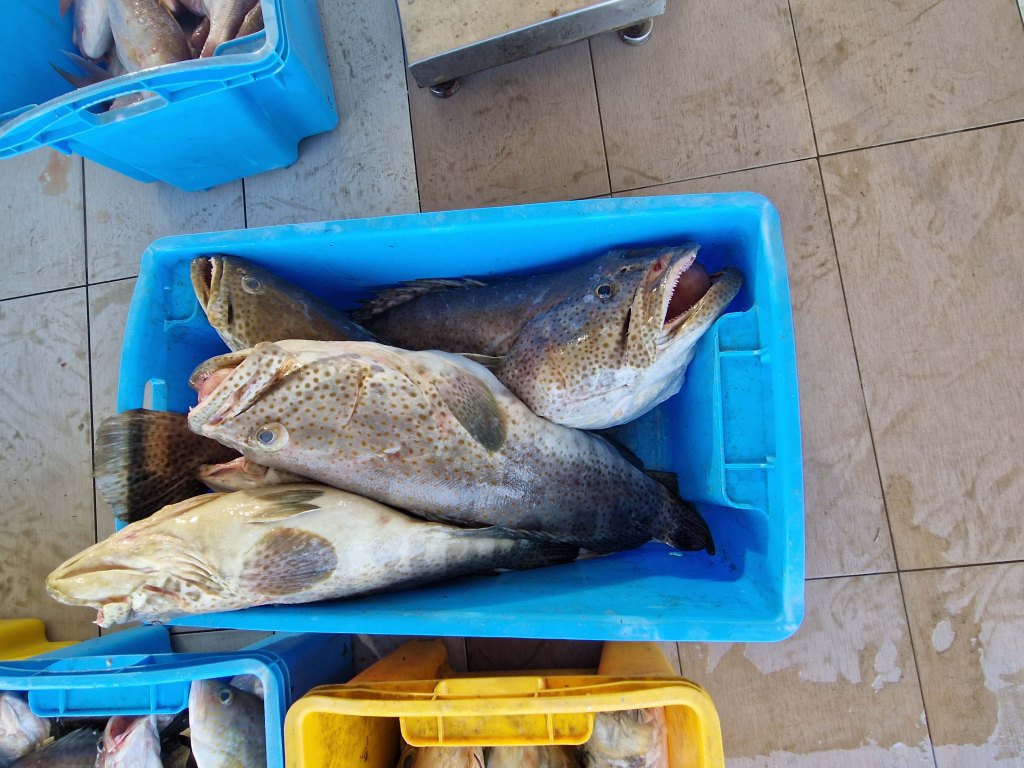
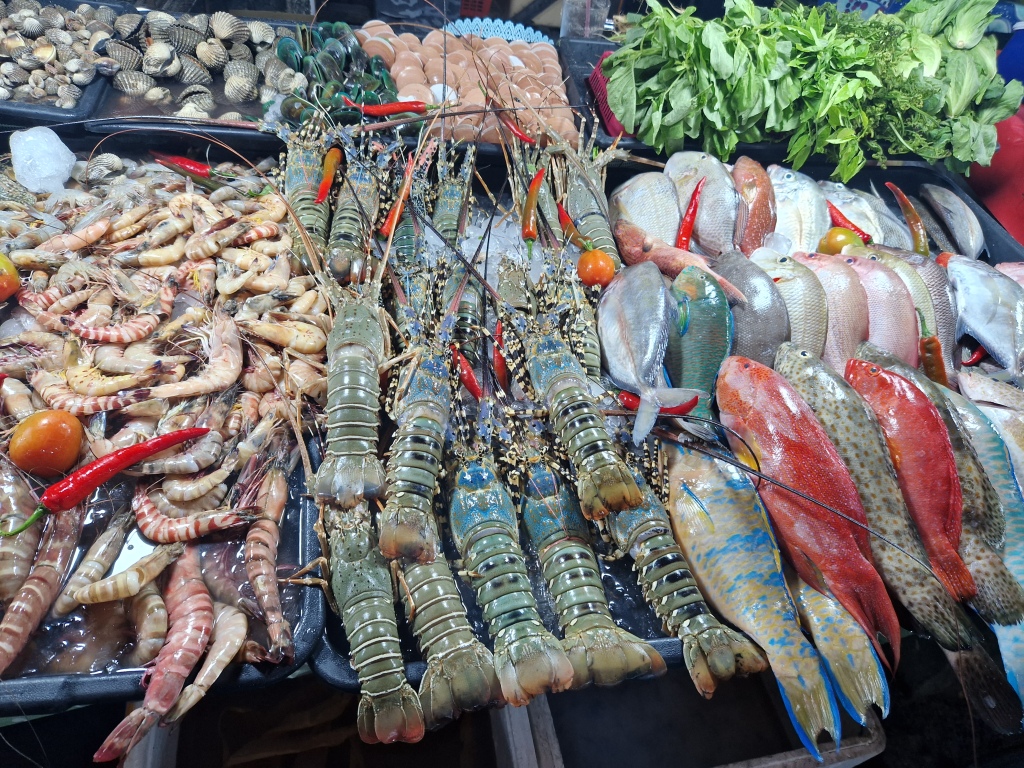
Meetings with Stakeholders in Kota Kinabalu
In Kota Kinabalu, I met Terrence Lim, the director of Stop Fish Bombing Malaysia, an organization dedicated to combating destructive fishing methods. He shared insights into fish bombing, cyanide fishing, and the marginalization of the Sama Dilaut community. According to Terrence, “Fish trades can now be settled at sea. Everyone has a phone, and money is being sent online.” However, he explained that the Sama Dilaut cannot register SIM cards and are completely dependent on the informal cash-driven economy.
Terrence also mentioned, “Big fishing boats are using sonars for fishing, and there’s a growing concern about the difficulty of catching big fish, further marginalizing the Sama Dilaut community.” He further explained that the Sama Bajau are often on the losing end of negotiations, having to sell their fish quickly due to lack of storage and their statelessness.
Kudat: Exploring New Horizons
Next, I traveled to Kudat, located in the northernmost part of Sabah. The Tun Mustafa Marine Park is here, though it attracts fewer tourists compared to other popular destinations. My goal was to explore new areas where many Sama Dilaut from Semporna had moved in search of better opportunities. After purchasing ferry tickets—and taking photos with the young female vendors who recognized me from social media posts in Kota Kinabalu—I met the chief engineer, who shared insights about the area’s environmental issues, including pollution and acidification. Upon arrival, I realized that most residents were Ubian, a Sama group from an island near Tawi-Tawi in the Philippines.
I looked for someone to take me to Bankawan Island, east of Banggi, where Terrence had mentioned a recently established Sama Dilaut community. I met a group of older men who helped me find a boatman. Next morning, we drove towards a cluster of three anchored houseboats, and the people on them greeted us warmly with big smiles. One young father, holding his baby boy with a protective amulet around his neck and arm, pointed at me and said “melikan, melikan” while waving happily.
The meeting was full of contrasts. The father continued to socialize with his little child, who had likely seen a white person for the first time. This made it a special occasion for the Sama Dilaut, who generally hold white people in high regard, having had mostly positive experiences with them in the past. We talked about their fishing habits and how long they had been living in the area. The father on the boat said they had been there for a few years and showed me some shellfish and a lobster they were planning to sell in Karaket. A young boy wearing a Neymar Jr. t-shirt was fishing with a hook and line, while a young man standing on the roof of the larger houseboat asked for my phone number, holding up a mobile phone. They told me fishing was better in Kudat than in Semporna and that they didn’t plan to return to Semporna.
Before leaving, I offered cookies and money. We also spoke to other houseboats, learning about nearby Sama Dilaut communities around the Tun Mustafa Marine Park. We were invited to a water village, clearly visible on Google Earth, where we toured and saw sea cucumbers being farmed. The community consisted largely of undocumented migrants from the Philippines, making their living from fishing and fish farming.


Semporna: A Deep Dive into Local Life
The final destination was Semporna, where I have spent significant time during previous trips to Sabah. Over the years, I have established relationships with various people and places in Semporna, allowing me to gather valuable information. The central market, which had faced years of construction delays due to lack of funds and alleged corruption, was finally completed. However, it was mostly abandoned, with only the fruit and fish markets being utilized. The rest of the trade took place on small tables scattered around sidewalks and walkways, particularly in Kampung Air. Young boys had turned the new central market into a makeshift football field, giving the area an almost ghost-town feel.
Walking through Kampung Air, I noticed the bustling activity with small restaurants, cafes, and stalls selling various goods. The Sama Dilaut who had come to buy staples and sell fish were as always very silent, reflecting the everyday struggles they face, such as racism, poverty, statelessness, and difficulties in making a living at sea. All these challenges can be described as structural violence, a concept originally put forward by sociologist Johan Galtung. This violence has no clear beginning or end, and no single person to blame. It is embedded in the spaces in between—in the market, in the tone of the seller, in the waiting room at the health clinic, and in the long gazes on the street.This was later reflected when I stumbled across a few fishermen from Bangau Bangau who had brought in a sizable catch of cuttlefish. When I asked them how many days they had been out at sea, they replied, “Three days,” at which point the fish trader, who had just started to weigh their catch, said with disdain in his voice, “Sleeping, eating, and pooping on the boat,” whereupon the Sama men fell silent once again.
Further down the wooden bridges, I noticed dried moray eels being prepared for sale. A vendor explained that these eels are bought from fishermen for 5 RM (approximately $1.10 USD) per kilo, dried, and then sold for 15 RM (approximately $3.30 USD) per kilo in Tawau. This 200% increase in value highlights the inadequate compensation the Sama Dilaut receive for their livelihood.

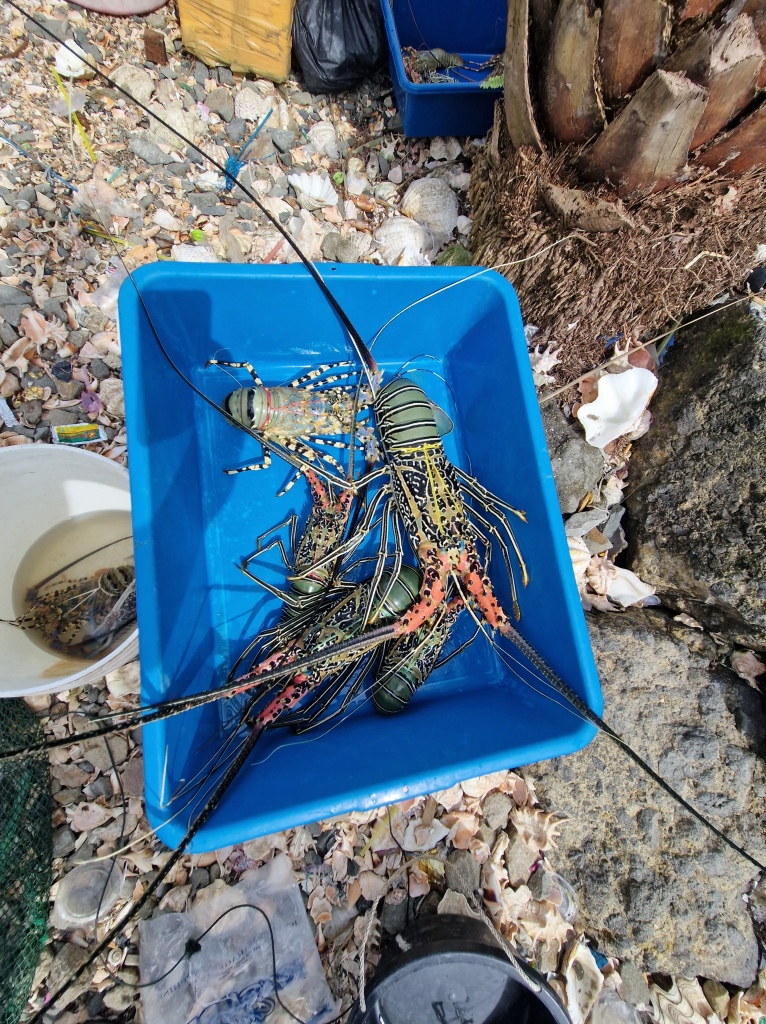





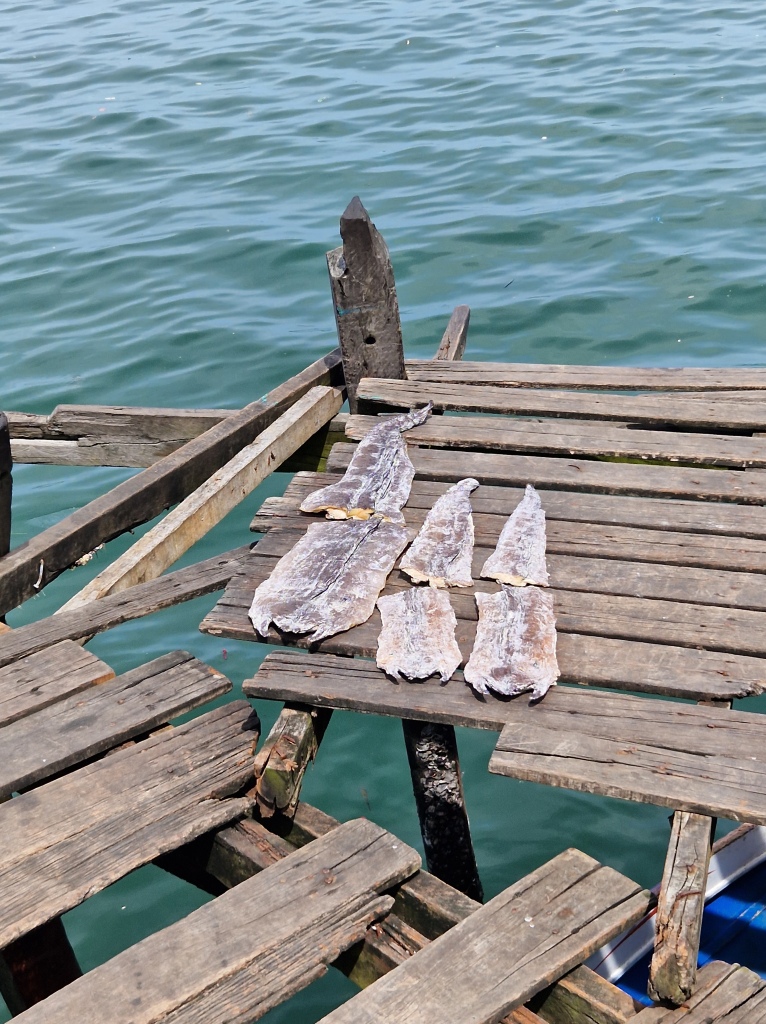
At a nearby store selling fishing equipment, I observed items reflecting various fishing methods used in the area—spear gun fishing, hook and line fishing, net fishing, and compressor diving. The new fish market near Kampung Air was lively, with many people recognizing me from previous visits. The market offered a wide variety of fish, and I engaged with children selling plastic bags, who were amazed that I could speak Sinama.
Exploring Sama Villages and Marine Life with Sabah Parks
Following Sabah Parks on one of their tours, I visited the Sama Dilaut village of Tatagan, located at the foot of Mount Bod Gaya in the Tun Sakaran Marine Park. Despite tensions between Sabah Parks and the village, I met Kirihati, one of the few who still live on larger houseboats. He shared his experiences and the challenges of maintaining this traditional way of life. Kirihati was growing medicinal plants on the roof of his houseboat, and on land, he was in the process of building a new houseboat with the help of a skilled boat builder.
Later, we visited Bohey Dulang, where Sabah Parks had an exhibition about marine life, including an albino turtle—a rare and fascinating sight. The caretaker was thrilled to show us this unique addition to their collection, explaining that albino turtles are extremely rare.
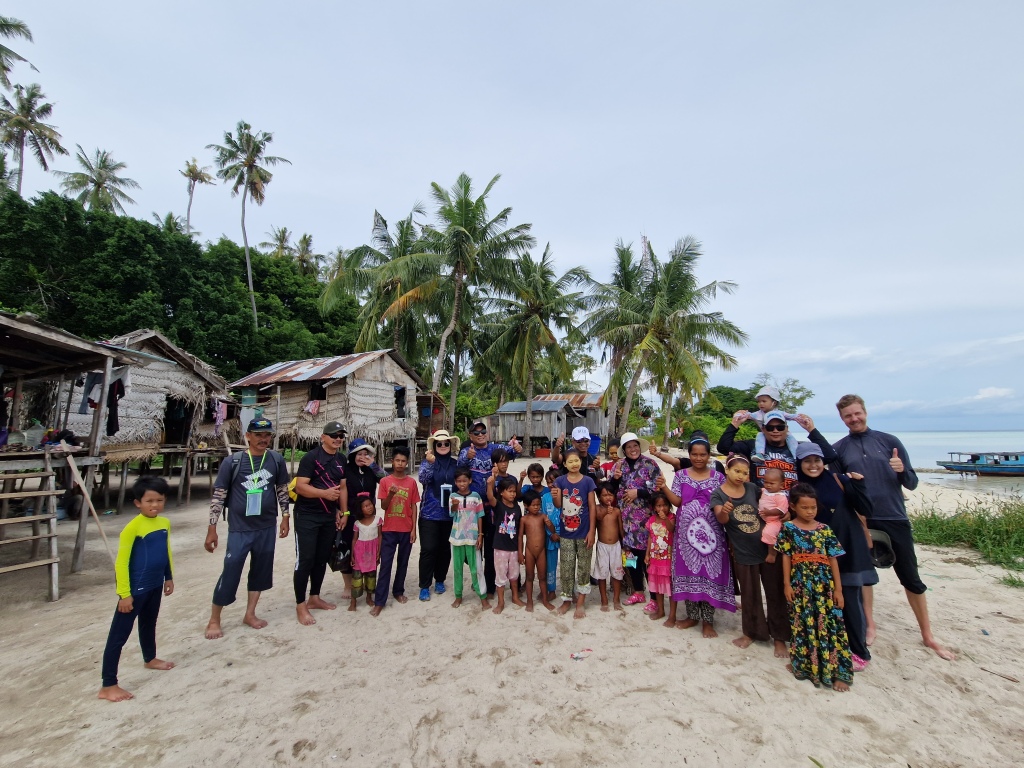

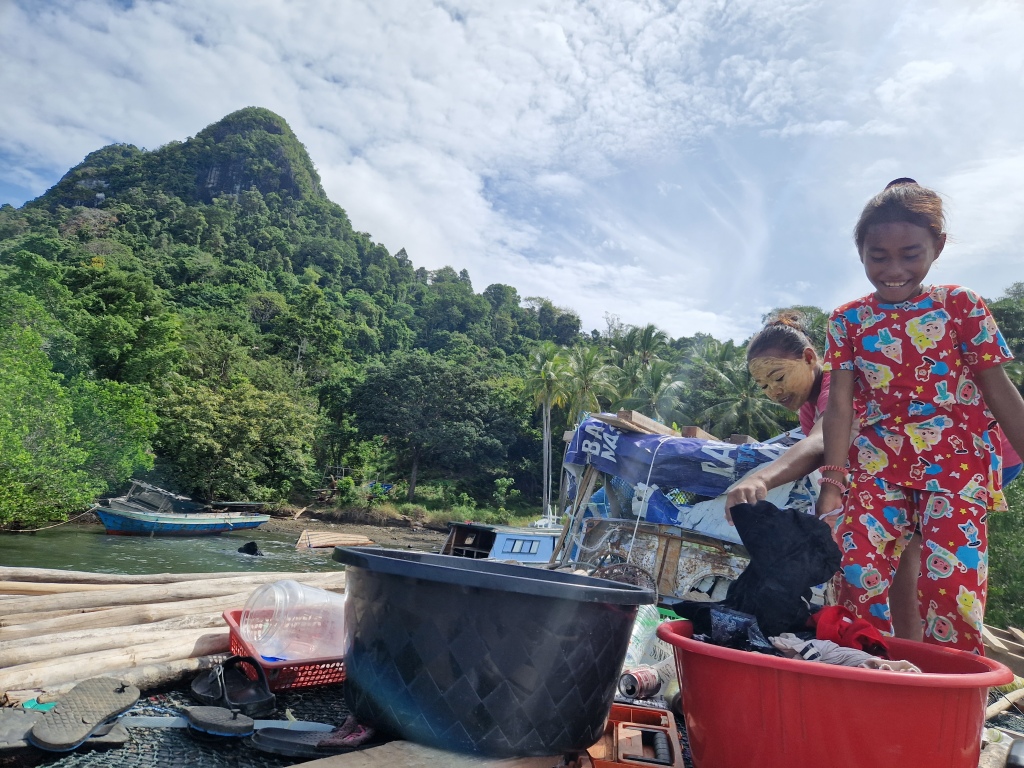






The final stop was the paradise island of Sibuan, home to a small group of Sama Dilaut, Malaysian soldiers, and Sabah Park rangers. On Sibuan, we stumbled upon a Photo Safari session. Two overly talkative and enthusiastic interpreters, who were themselves Sama Bajau, urged all the Sama Dilaut children to line up. A group of tourists from the Malaysian mainland then handed out snacks to the children. Afterwards, mandatory photography ensued, and I was invited to participate.
Following Terence on a Busy Work Day
While in Semporna, I joined Terence, who had come down from Kota Kinabalu, on a day trip to check on his bomb-detecting sensors scattered throughout the area. Stop Fish Bombing Malaysia has over 10 sensors covering a large part of the sea. Terence explained that the number of explosions had dramatically decreased, especially near Bum Bum Island. However, some sensors had been bombed by fishermen who opposed the initiative. We also checked on a radar installed on Sanlakan Island, which helps track boats involved in fish bombing.





Visit to Bangau Bangau
One day, I visited Bangau Bangau, home to many Sama Dilaut who arrived from Sitangkai in the Philippines in the 1960s. Most villagers now have Malaysian Identity Cards, but many who came later remain undocumented. Some of the residents have become middlemen in the fishing trade or taken on regular jobs, with their cars parked next to the water bridges, while others continue as traditional fishermen.
I reconnected with an old friend, Si Wanti, a former boat driver who had taken me out to sea many times in the past. Now, he makes a living from small-scale net fishing. I gave him shark and coral fish posters in Sinama, which fascinated many of the elders. An old man living in the same compound as Wanti was particularly happy to see the shark poster. When I read out the names of the sharks to him, he was amazed that I even knew their names. He looked at the collage for a long time, identifying the sharks one after another. He was impressed that all the sharks had been put together in one photo and remarked that the person who took the photos must be very brave.
Reflections and Key Takeaways
Throughout my trip, I learned more about the fish value chain. For instance, moray eels are bought for 5 RM per kilo and sold for 15 RM per kilo in Tawau, representing a 200% increase in value. It’s clear that the Sama Dilaut are not adequately compensated for their hard work. They dive and fish under harsh conditions, only to sell their catch for a pittance, benefiting middlemen and end consumers who enjoy seafood at low prices. Industrial fishing forces down prices, leaving subsistence fishermen and the environment to pay the ultimate price.
People are constantly pushed to their limits, driven by physical needs and market forces. While only those higher up the value chain may become wealthy, the majority must keep pushing themselves and their environment daily. Despite the hardships, the Sama Dilaut have a deep fascination and love for the sea. They cherish moments of peace with their loved ones, swaying with the waves and watching the sunset after a fulfilling meal. However, their constant struggle for survival amidst harsh conditions places them in the grip of structural violence.



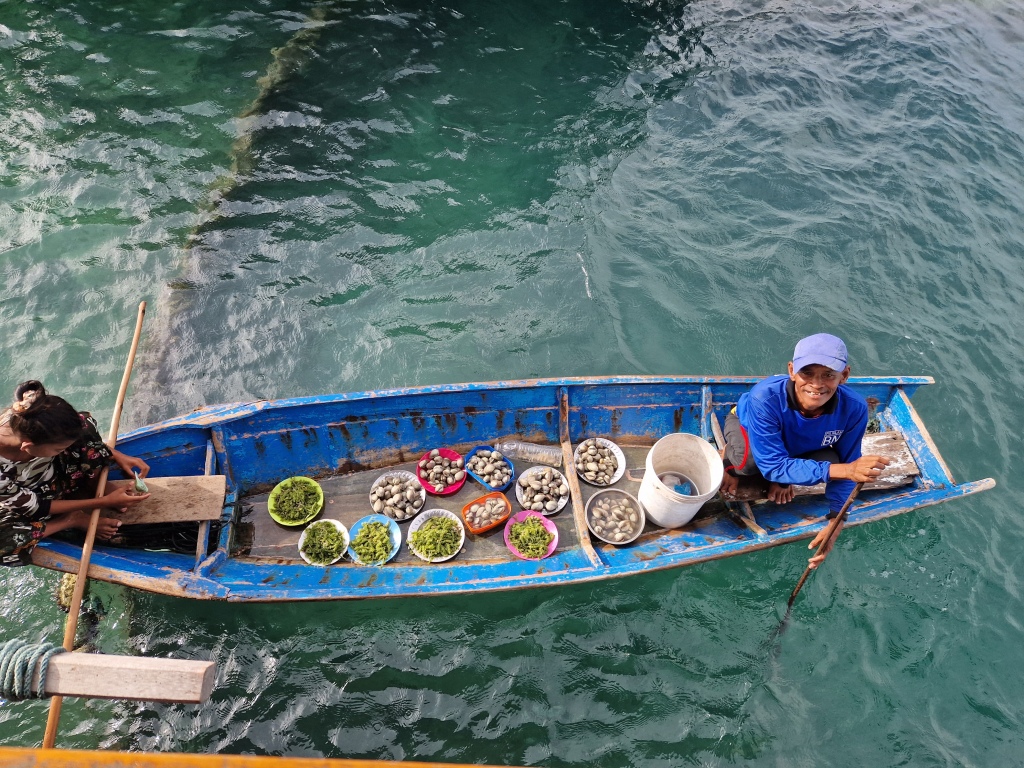


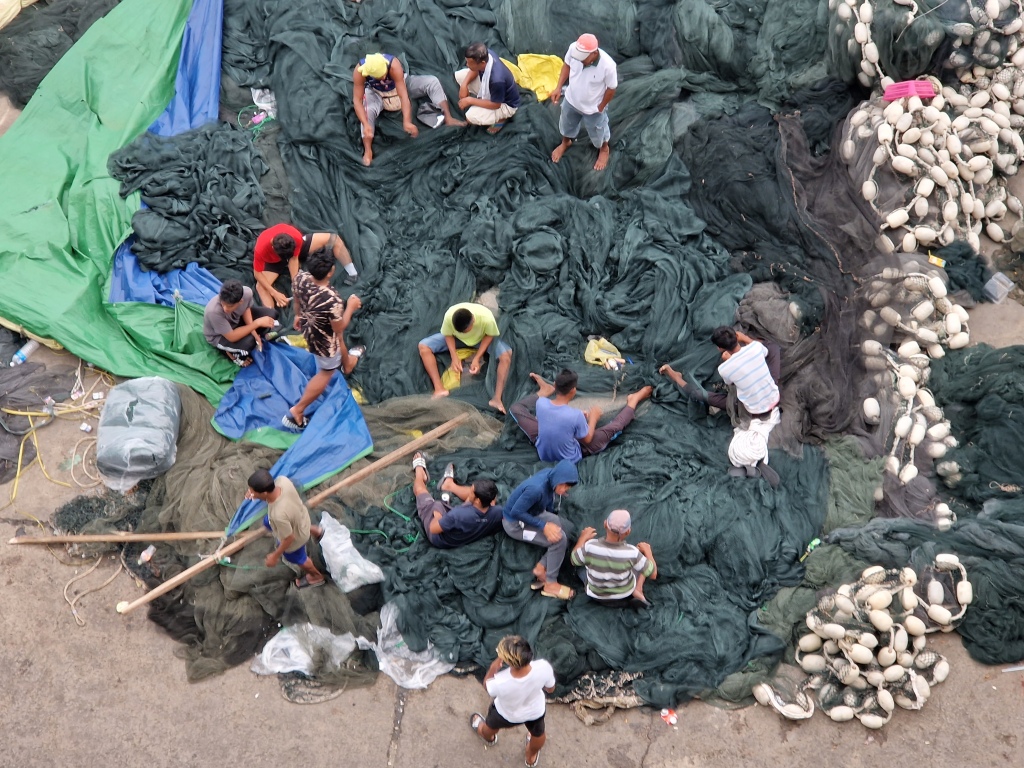
Fish serve as a lens through which we can explore important issues such as conservation, destructive fishing methods, and the structural violence faced by the Sama Dilaut. Despite their hard work and fishing skills, the Sama Dilaut continually struggle with capital and opportunities, often losing out in the economic trade. Most Sama Dilaut today live near marine national parks like Tun Sakaran Marine Park in Semporna and Tun Mustafa Marine Park in Kudat. These areas prohibit large-scale fishing, creating a niche for Sama Dilaut and other groups.
However, competition is intense, and resources are limited. Coral bleaching is already a concerning development in the area, threatening the delicate marine ecosystems that the Sama Dilaut depend on for their livelihood. Their resilience and deep connection to the sea highlight the need for greater support and sustainable practices to preserve their way of life and the marine environment they depend on. Ensuring the sustainability of these ecosystems is crucial not only for the Sama Dilaut but for the broader health of our oceans.
The resilience and deep connection to the sea exhibited by the Sama Dilaut, despite the immense challenges they face, underscore the urgent need for greater support and sustainable practices. By preserving their way of life and the delicate marine environment they depend on, we not only honor their rich cultural heritage but also safeguard the health of our oceans for future generations. Their story is a powerful reminder of the intricate bond between humans and nature, and the critical importance of fostering both community and environmental sustainability.

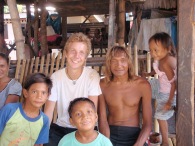





Leave a comment